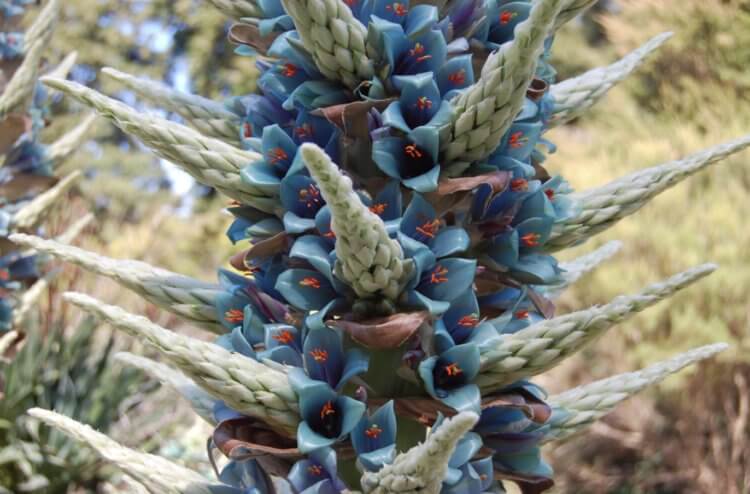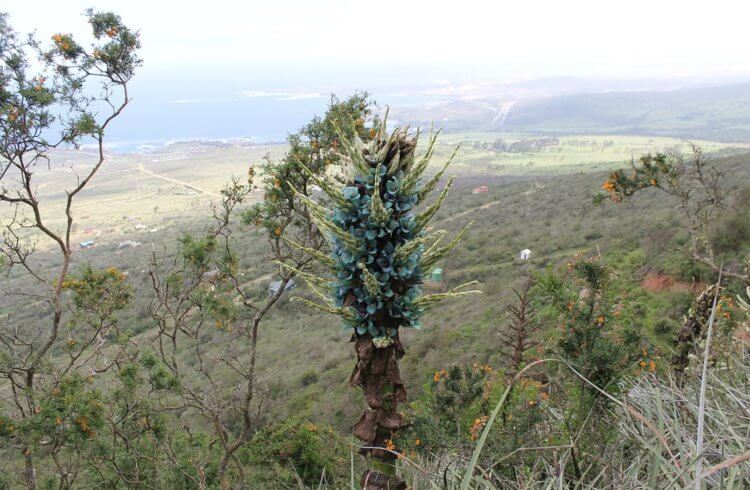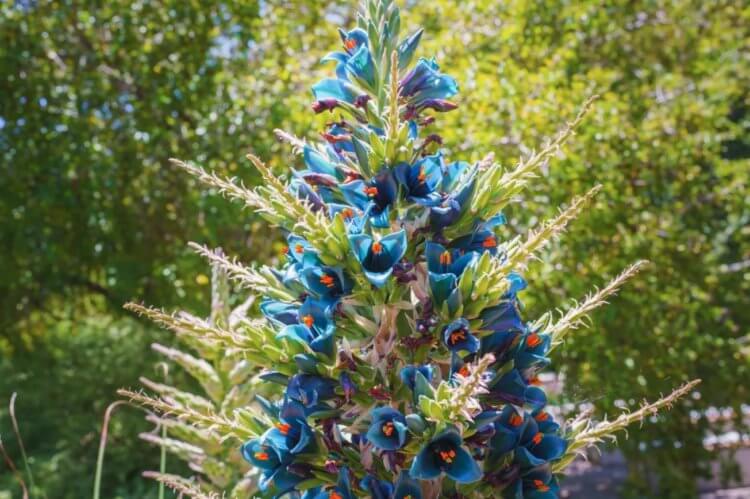In 2021, workers at the Cambridge University Botanic Garden shared good news: a rare cactus, Selenicereus wittii, bloomed in their garden. In the wild, this plant grows only in the Amazon forests, and its flowering occurs only once a year and lasts only 2-3 hours. The rare cactus grows under controlled conditions in only ten botanical gardens around the world, so many plant lovers only dream of witnessing its flowers bloom. That year, for the first time in history, the garden staff managed to film the flowering and show this event to everyone. Recently, another similar event occurred that will interest all lovers of plants and all kinds of rarities. British botanists had the honor of observing the floweringalpine puyathis only happens once every 20 years. Needless to say, they shared photos of this beauty.

What Puya alpine looks like
Alpine puya (Puya alpestris) belongs to the bromeliad family, that is, it is a distant relative of the well-known pineapple. This plant grows only in the territory of the Republic of Chile, which is located in the southwest of South America. Local residents call it chagual in their language.
The height of the alpine puya does not exceed 30 centimeters, that is, it is a relatively small plant. It has a very powerful root system and hard leaves.

Alpine puya in the wild. photo source: Wikipedia, by Pato Novoa
Many people have never seen an alpine puya in person. The fact is that it grows exclusively on the slopes of the Andes – the longest mountain range in the world. To see this plant, you need to climb to an altitude of more than 2200 meters. Typically, alpine puyas grow in places with long-standing snow. As you can understand, not every tourist can climb to such a height.
You will be interested:Why does your mouth burn and sometimes bleed after eating pineapple
Plants in the Andes
But for people who have lived in Chile since childhood, this is not such a difficult task. Sometimes they collect the fleshy tops of the stems and eat them. There is an assumption that hundreds of years ago the indigenous peoples of America used the thorns of these plants as fishing hooks. But there is no convincing evidence of this, because tools made from plant material quickly decompose and are not preserved to this day.

Perhaps the thorns of the plant were used by the Indians for fishing. Source of illustration: thecanadianencyclopedia.ca
Local shepherds do not like puya because young sheep become entangled among the plant's thorny stems. If they are not saved in time, they die painfully. So in the thickets of this plant it is quite possible to see the skeletons of animals, and it clearly looks creepy.
About the rare plant that we mentioned at the beginning of the article, read the material “This plant blooms only once a year and emits pleasant aroma. Watch the video»
Blooming of a rare plant
In order for alpine puya to grow, strictly defined environmental conditions are needed. They were recreated in the Botanical Garden of Birmingham (England), where, in addition to the Alpine Puya, you can see many other exotic plants.
In the wild, this plant is pollinated by hummingbirds. Most likely, they do not need any introduction: since childhood, we have all known about these tiny creatures with a long beak that are capable of making up to 80 wing beats per second. It is impossible to keep these birds inside greenhouses, so the botanical garden staff carefully pollinate the plant by hand using brushes.

According to the workers of the botanical garden, the alpine puya has been growing there for 20 years. During this time it never bloomed, because this happens very rarely, especially in a greenhouse. But recently this event, expected by botanists, finally happened, and they immediately began taking photographs. They had very little time for this, because each flower only lives for about ten days. It is believed that the plant blooms so rarely because its development is very slow.
In addition to all this, the alpine puya is a monocarpic plant. This means that it reproduces only once in its life: after flowering it dies. But botanists at the British garden hope to at least improve the situation a little by removing the seeds and replanting.
If you want to discuss this or another article, join our Telegram chat. We host interesting quizzes there!
Do you think the hero of this article can be added to our selection of “5 Most Unusual Plants on Earth”? To it we added the smelliest Rafflesia Arnold, which can cause terrible pain to the Gimpy-Gimpy, the Darth Vader-like Aristolochia and a couple of other interesting options. If you missed this material, we definitely recommend reading it!